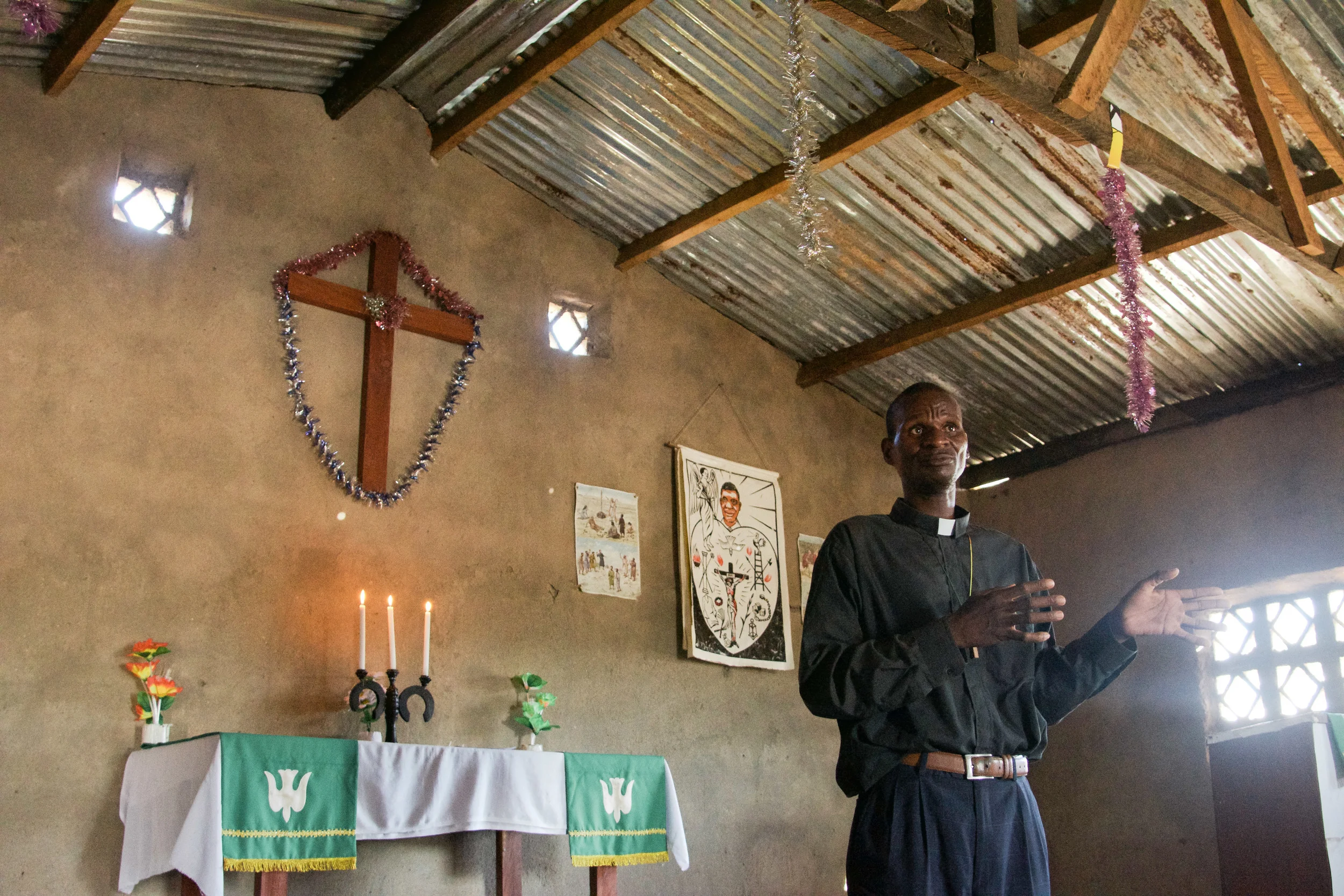A Portrait of Mozambique
It takes a long time to get to Villa de Sena, Mozambique. If, like me, you live in the United States, you have to first get to Africa. This is no easy trek—in my case, traveling to Nairobi is a laborious 30-hour journey by plane, train, and automobile. From Nairobi, you spend another day airborne until you reach Beira, Mozambique. From Beira, it is a slow, arduous 12-hour train ride until the screeching halt of brakes signals that you have finally, finally arrived in Sena.
You might step off the train into the dust of central Mozambique without any real idea of what to expect. After all, the only things you have been given beforehand are plane and train tickets, a few brief emails advising what to pack, and instructions to photograph the trip. When you arrive in Sena, it is dark, night having fallen five hours prior, and forty seminarians and pastors greet you with singing and dancing. You shake each of their calloused hands afterwards, one by one, and it is not until the next morning that the layers of mystery slowly begin to peel back.
First, you are warned not to get too close to the Zambezi river because it is home to crocodiles, hippos, and other unseemly snaking and slithering things. With a significant look, you’re told that it's not uncommon for people to disappear while fishing or gathering water. You gulp and nod. It seems they have already figured out you're prone to wandering. You also quickly realize that the water in your bathroom is cold river water, but you are thankful that there is at least a shower head. The language barrier then presents itself broad and vast, and your first order of business is to learn the Portuguese word for "thank you" (it’s obrigado). It might set in then how far away from home you are—think of how long it took to travel here!—but somehow you don’t mind.
Later, as you get to know the people of this remote place, more of the shroud of mystery will be lifted. You are here with the LCMS as a photographer to capture the rapidly growing Lutheran community in Mozambique, and you never cease to be surprised by the people you meet through your lens. Seeing the astounding spread of Lutheranism in Mozambique, you can't help but be reminded of the early church as it is recorded in the New Testament. You read through Acts on a quiet night and swear it is describing the present. In this small area in Mozambique, there have been 21 new churches planted in the past year (each filled to capacity), divided between only eight pastors. So hungry are the locals to hear and be nurtured in the Gospel, the stories almost don’t sound real: two young men bicycling forty kilometers just to meet with a pastor after stumbling across a Lutheran congregation; twenty-one men, women, and children walking 14 hours in order to meet visiting pastors and missionaries (that is, us); truck drivers so impressed by an ordination service they'd attended that they rushed back to their village to start their own congregation.
All these people you'll meet and stories you'll hear will remind you that while yes, poverty is real, it is somehow not the main focus. On this trip, there are no building of orphanages or painting of churches or poverty porn, but instead the warmest fellowship with strong, young, passionate brothers and sisters in Christ. They are generous and enterprising, resourceful and smart. If you go to Villa de Sena in central Mozambique, you'll without a doubt be humbled, but you'll also be astonished by how much you learn from these strong, hard-working, resilient, welcoming, joyful people. You'll be surprised by the camaraderie and love you'll feel, even though you can barely communicate through language. And at the end of it all, you’ll realize that, cultural differences aside, there's no mystery to any country when you’re being surrounded by the body of Christ.
A young boy looks into the church building of St. Matthews Lutheran Church in Kapesseni.
The main street in Sena
The most stunning young woman in Mutarara
Young and old, women everywhere carried at least one baby or toddler on their back at all times.
We visited this church in 3 de Fevereiro late in the afternoon and the light was nothing like I've ever seen. Here, mothers and their babies are illuminated as they listen to a message being given.
These two young ladies posed on their own for a portrait when they saw my camera.
This congregation is still saving up for a church building, so in the meantime, they meet for services in the open air.
Rev. Shauen Trump baptizes a child during a service in São Paulo Lutheran Church in Sena. Fifty-nine people were baptized all together that day.
A local pastor addresses his congregation in Chemba.
Members of a congregation are so excited to see us that they meet us on the road, then run singing alongside the truck until we reach the church.
Music in central Mozambican churches consists simply of drums, shakers, and the human voice.
Yours truly receiving a chicken and a squash from the congregation in Muanda, Mozambique.
Two young boys collect the offering during a service at São Paulo Lutheran Church in Sena.
Most of the congregants are young women and children. Here, they are saying goodbye as we head to our next congregation.
A baby moments before she is baptized.
Standing room only at the back of a church building in 3 de Fevereiro.



























